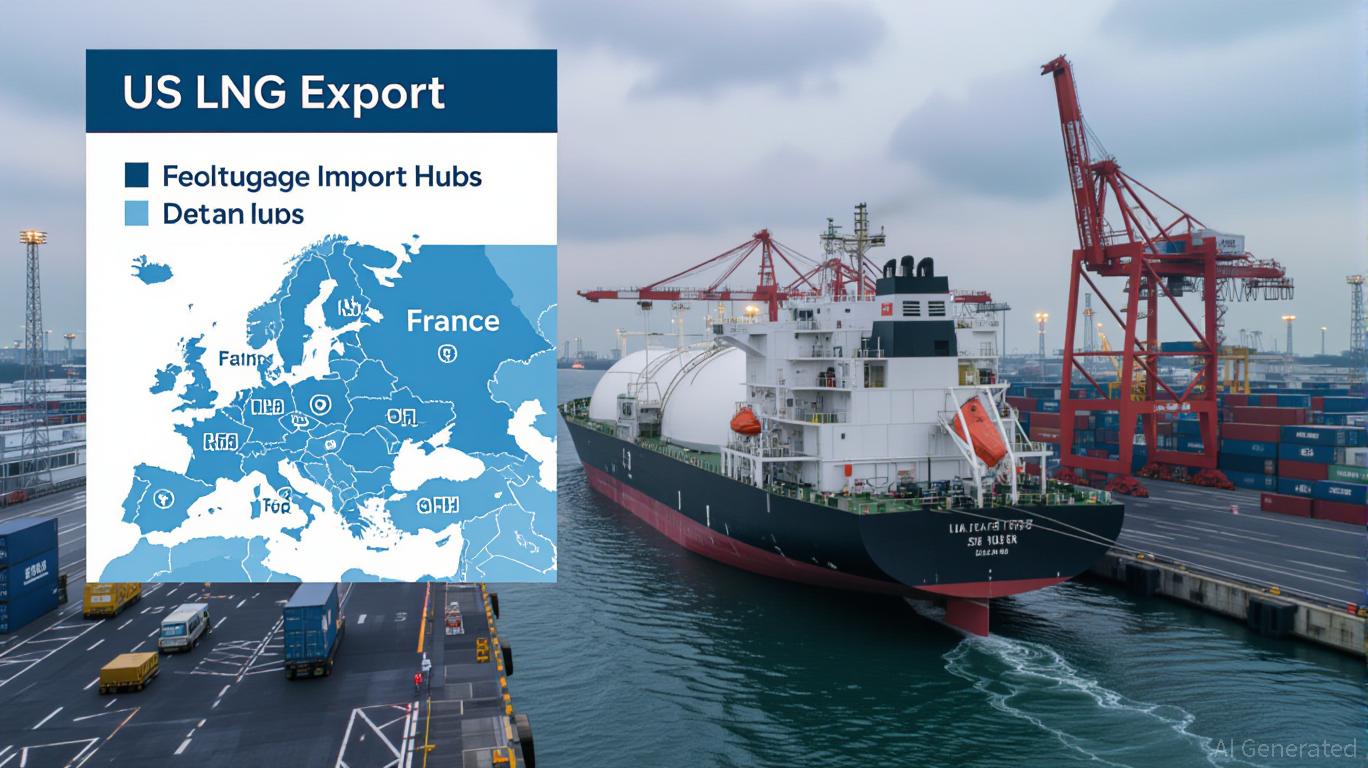
The US natural gas market is at a crossroads, shaped by a confluence of record LNG exports, surging production, and seasonal inventory dynamics. For investors, the current price dip—driven by short-term oversupply and weather-driven demand moderation—presents a critical juncture. While near-term volatility persists, structural shifts in global energy markets suggest a compelling case for a 2026 price rebound.
Near-Term Drivers: Exports, Production, and Inventory Balances
The first half of 2025 saw US LNG exports surge by 22% year-over-year, reaching 69 million tons, with Europe accounting for two-thirds of shipments. This shift reflects a strategic recalibration of global demand, as European nations—still reeling from the 2022 Russian gas crisis—have deepened their reliance on US LNG. The Netherlands, France, and Spain alone now absorb 28% of US exports, a 61% increase compared to 2024. Meanwhile, Asian buyers have cut US LNG purchases by 35%, redirecting demand to cheaper Middle Eastern and African suppliers.
Domestically, production remains robust, with August 2025 output hitting a record 103.2 Bcf/d, up 4.7% year-over-year. New LNG projects like Golden Pass and Plaquemines LNG Phase 2 have driven feedgas flows to 15.4 Bcf/d, a 19.6% increase from 2024. However, this surge has outpaced demand, pushing working gas inventories to 3,186 Bcf as of August 8—6.6% above the five-year average. The EIA’s latest Short-Term Energy Outlook (STEO) now forecasts 2025 Henry Hub prices at $3.60/MMBtu, down 21% from April projections, as storage levels cushion near-term price pressures.
Structural Shifts: LNG Infrastructure and Global Demand
The long-term outlook hinges on structural changes in the LNG market. By 2026, an additional 7 Bcf/d of US export capacity is expected to come online, with projects like Corpus Christi Stage 3 and Cameron LNG Phase 2 nearing completion. This expansion, coupled with Europe’s ongoing energy transition, is tightening global supply-demand balances. European imports of US LNG are projected to remain elevated, with the EIA forecasting 16 Bcf/d of exports in 2026—a 13% increase from 2025.
Meanwhile, the US power sector is emerging as an unexpected stabilizer. Natural gas supplied 44% of PJM’s generation during a June 2025 heatwave, as AI-driven data center expansion and grid bottlenecks for renewables prolong gas’s role in peak demand. The EIA anticipates gas-fired power will account for 38% of US electricity generation in 2026, up from 35% in 2024.
Weather Volatility and Market Sentiment
Seasonal weather patterns remain a wildcard. The EIA’s August STEO revised winter 2025–26 price forecasts upward, with December 2025 at $4.177/MMBtu and January 2026 at $4.486/MMBtu. These levels reflect expectations of tighter balances during the heating season, despite current oversupply. Analysts at StoneX Financial Inc. note that the forward curve’s steep contango—where future prices exceed spot prices—signals market confidence in winter demand.
Investment Implications: A Strategic Entry Point?
The current price dip—driven by short-term oversupply and maintenance-driven export delays—offers a tactical opportunity for investors with a 2026 horizon. Key catalysts include:
1. Inventory drawdowns: The EIA projects storage levels will fall below the five-year average by Q3 2025, tightening near-term balances.
2. LNG-driven demand: European imports and AI-driven power demand will outpace production growth, particularly as associated gas from the Permian declines.
3. Structural price floors: The 12-month price strip is currently priced at $4.267/MMBtu, reflecting market expectations of a post-summer rebound.
For investors, this environment favors a balanced approach. While near-term volatility may persist, the structural case for higher prices in 2026 is robust. Positions in midstream LNG infrastructure (e.g., Kinder Morgan, Energy Transfer) and integrated producers (e.g., Cheniere Energy) could benefit from both demand growth and margin expansion.
Conclusion
The US natural gas market is navigating a pivotal inflection point. While current oversupply and weather-driven demand moderation create near-term headwinds, the interplay of LNG export growth, production discipline, and structural demand shifts is setting the stage for a 2026 price rebound. For investors, the key lies in distinguishing between cyclical noise and long-term fundamentals—a task made easier by the clarity of today’s data. As the market prepares for a winter-driven tightening, the question is no longer if prices will rise, but when.
